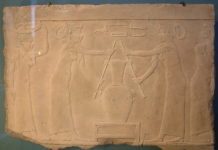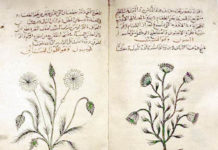Wind is not only a mysterious condition of weather, but an important spiritual element to civilizations, past and present.
Wind is a natural force, defined as the movement or flow of air. Meteorologists often refer to wind by the strength, velocity and direction of air movement. While we are most often concerned with the wind affecting us here on Earth, the strongest winds in our solar system actually occur in Saturn and Neptune. The most common causes of wind are heat, pressure, and the rotation of planets. Today, we seem only to notice wind, when it accompanies a hurricane or tropical storm, or causes man-made structures or trees damage, yet, mythology, our history and our civilizations have all been widely influenced by the powerful and mysterious wind.
Wind in Religions
Wind has long been considered an element for many cultures and religions, and a powerful driving force behind the beliefs and spirituality of many, including Hinduism, Buddhism, Shinto, and ancient Greece and Rome.
In the Hindu and Buddhist religions, wind is viewed as the nature or state of a god, referred to as “vayu”, “pavan” and “godai”. Wind is one of the five great elements respected, studied and celebrated by these spiritualists in their quest for wisdom.
In early Japanese culture, their civilization followed the Shinto, spiritual principles to maintain their connection between their ancestors and the living. Fujin was one of the earliest gods of Shinto, the god of wind. Wind is seen as a pure substance and considered a universal power, literally providing a spiritual connection between them.
Wind in Greek Mythology: The Wind Gods
In Greek mythology, there were gods who created and ruled the eight wind directions. Each direction was represented by a distinct wind god. Boreas, the winter wind god, brought the coldest air and was represented by the north. Kaikias was the wind god of the north-east. The wind god of the north-west was named Skiron. Zephyrus was the spring wind god, represented by winds from the west. Notus, the summer wind god, brought the hottest winds, often accompanied with summer rain, and was represented by the southern most point. Apeliotes was the wind god for the south-east, and the south-west wind god was named Livas. Eurus was the east wind god, and technically represented autumn. However, Eurus was not associated with an actual season, as the Greeks only recognized three.
The Romans were greatly influenced by ancient Greece, also naming the winds after gods or their gods after the winds.
Kuan Yin: Goddess of Mercy and Passion
Kuan Yin, also known as Kannon, Guanyin, Miao Shan and Tara, is widely recognized as the Goddess of Mercy and Compassion. She is celebrated by Buddhists, Hindus, Tibetans, Mongolians, Chinese, Japanese, and Spiritualists, alike. Kuan Yin is often associated with the Divine Mother and Mother Mary, a wise and compassionate spiritual saint who nurtures and heals mankind through the easterly wind. Kuan Yin, ancient and modern, embodies the powerful, spiritual nature of wind.
For so many civilizations, past and present, wind is so much more than air; it is an experience outside natural law. Wind is a true phenomenon, the presence of a spiritual force, quietly teaching us, bringing wisdom and healing to our hearts, and connecting us spiritually with one another.








